The NTSB reports that the four bolts securing the mid door plug of the Alaska Air 737 MAX-9 were missing during the accident, last January.
So far, after initial reporting from the NTSB and the FAA, a lot of key information on this accident has come from leaks. The NTSB has now released its preliminary report on the 737 MAX-9 blow-out, verifying some of this information.
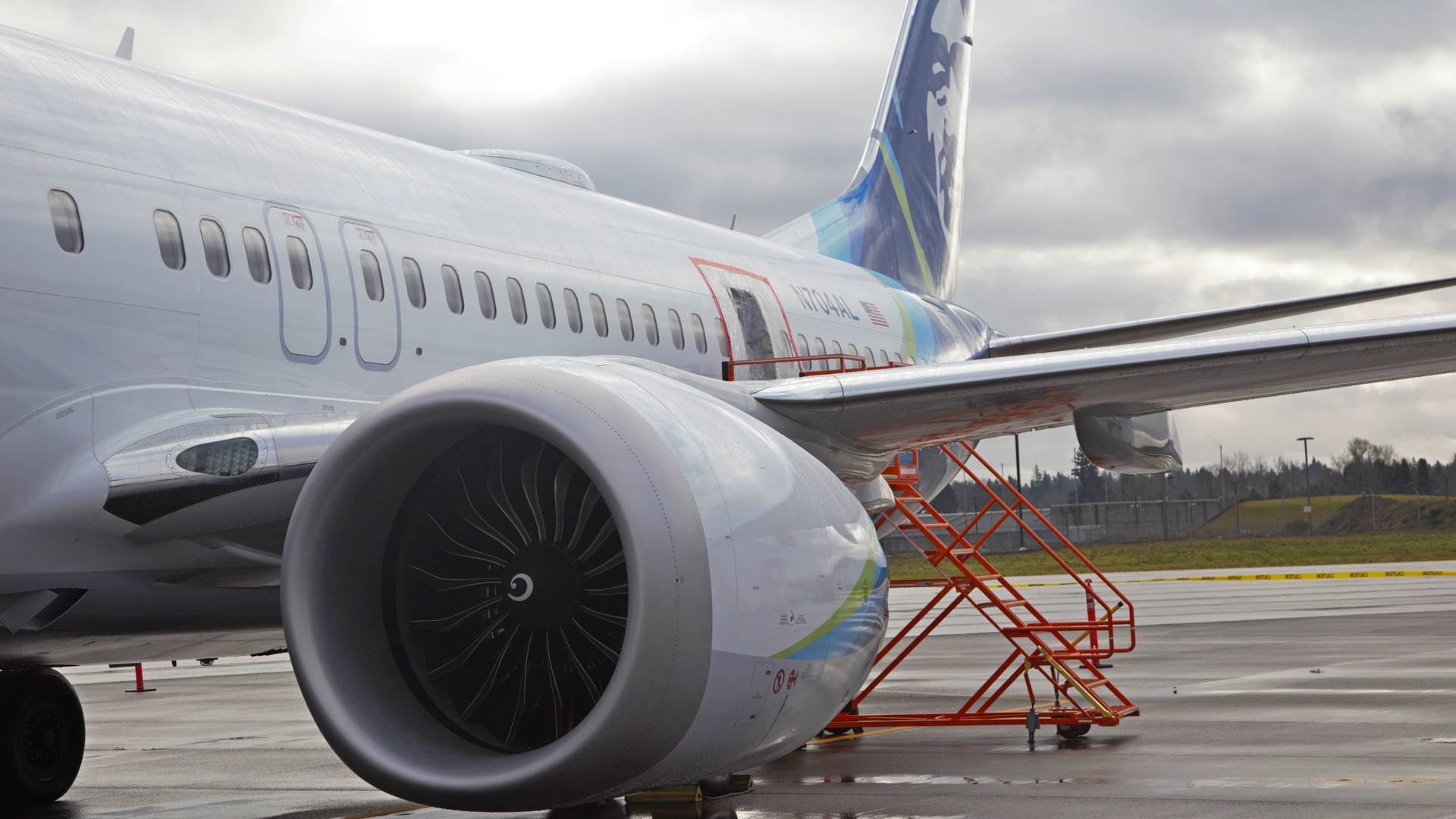
If you somehow missed this story, it involves Alaska Airlines flight 1282, from Portland International (KPDX) in Oregon, to Ontario International (KONT) in California, on January 5th. The flight was climbing through 14,000 feet when the left mid-cabin door plug blew open.
Thankfully, no passenger was sitting next to the door plug, which wasn’t even visible from inside the cabin. The flight landed safely back in Portland. A local resident soon found the door plug of the 737 MAX-9 in his backyard and notified the NTSB.
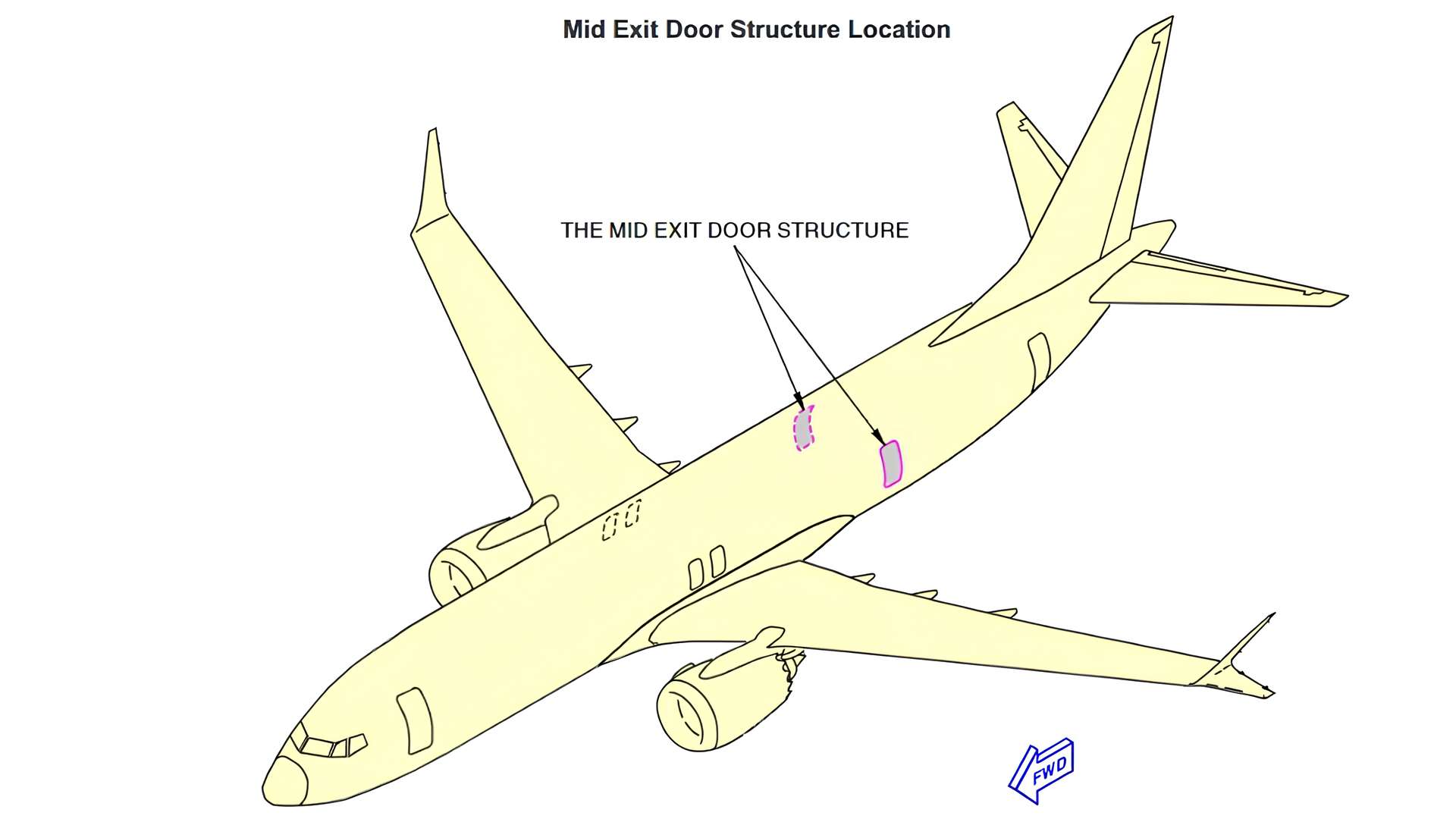
The NTSB likes to publish its preliminary report about a month after incidents and accidents and did so in this case, too. A key question in the investigation was whether or not the door plug was secured properly.
Securing a Door Plug (or not)
The 737 MAX-9, like the 737-900ER before it, has two additional doors behind the wing, compared to other 737s. These mid-cabin exit doors (MEDs) are necessary for evacuation purposes if the aircraft has 190 or more passenger seats. Alaska’s 737 MAX-9s and 737-900ERs don’t.
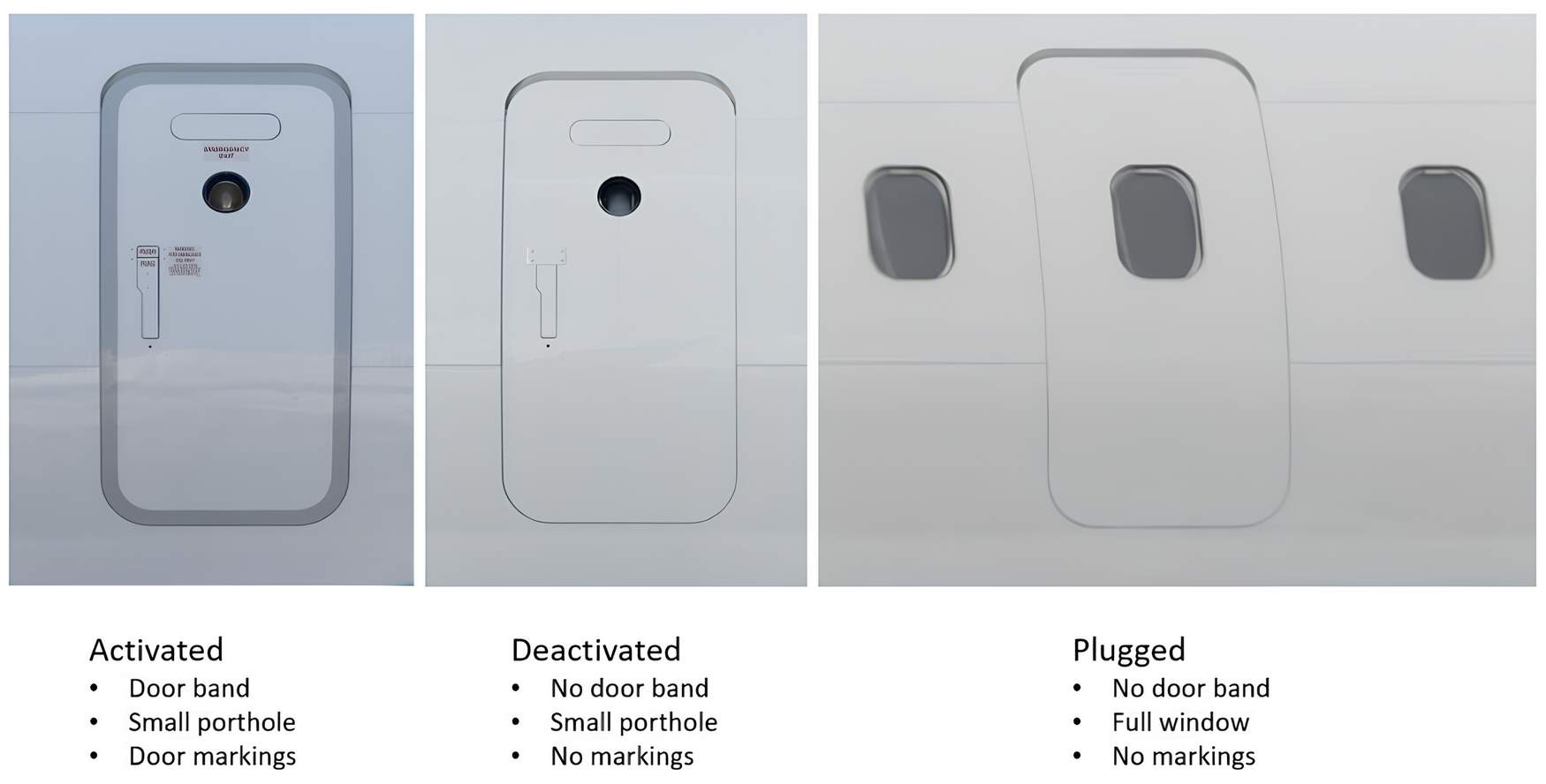
For airlines with fewer seats than this threshold, Boeing can either deactivate the door or replace it with a door plug (see above). This plug has the same shape as the door and the same downward hinge mechanism. However, it doesn’t have an opening mechanism, a slide, or other necessary fittings, like a vent. All this makes it much lighter than a door.
Instead of a lock or other actuating mechanism, door plugs have four bolts, nuts, and pins, that keep them from moving vertically. This vertical (upward) movement is necessary, to disengage the door from securing fixtures in the frame.
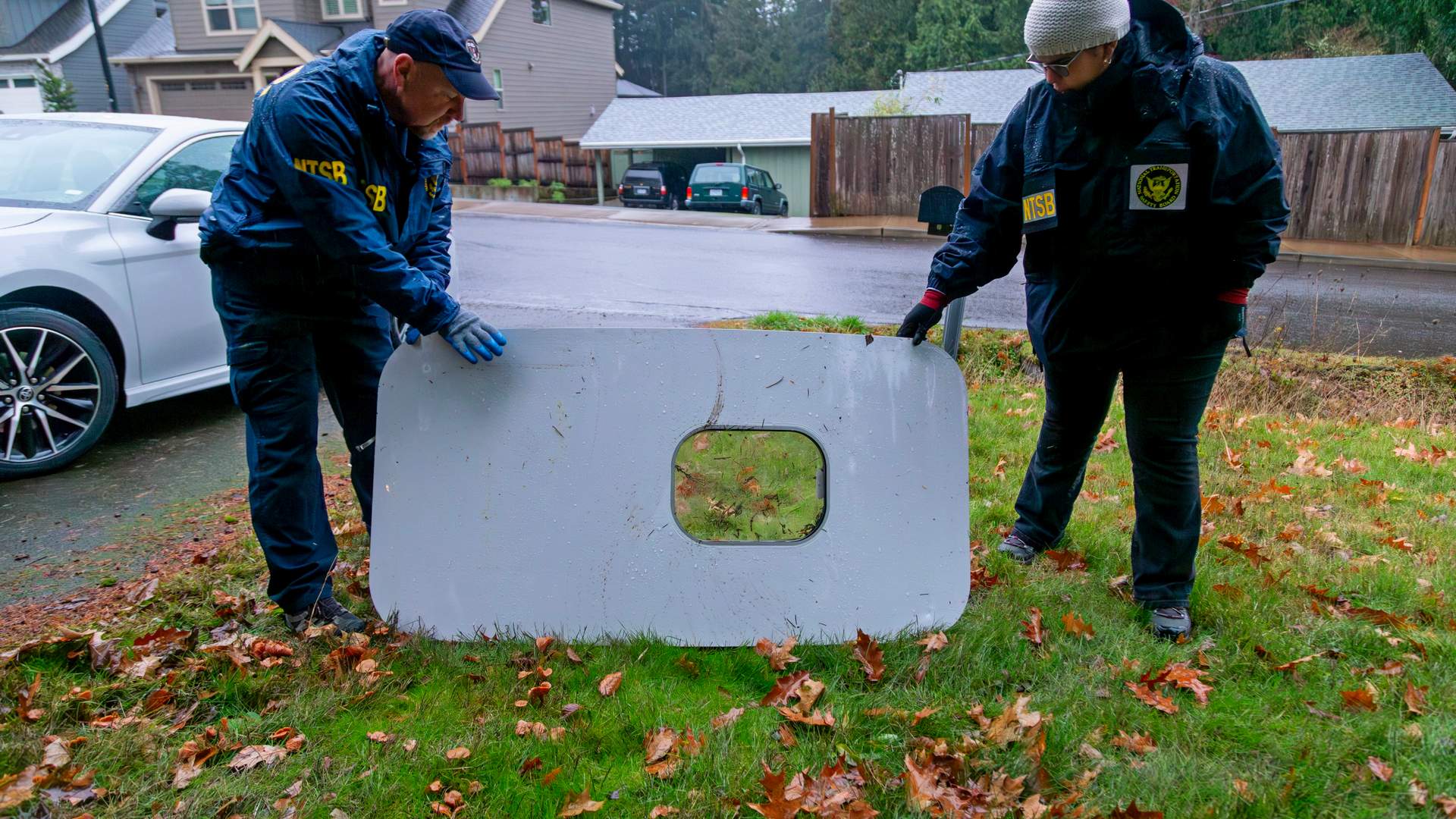
The presence, proper fit, or absence of these fasteners in the door plug of the 737 MAX-9 was a key point in the NTSB investigation. In its newest report, the NTSB analyzed wear marks in the recovered parts of this 737 MAX-9 and determined that they weren’t in place.
The NTSB report says:
“Overall, the observed damage patterns and absence of contact damage or deformation around holes associated with the vertical movement arrestor bolts and upper guide track bolts in the upper guide fittings, hinge fittings, and recovered aft lower hinge guide fitting indicate that the four bolts that prevent upward movement of the MED plug were missing before the MED plug moved upward off the stop pads.”
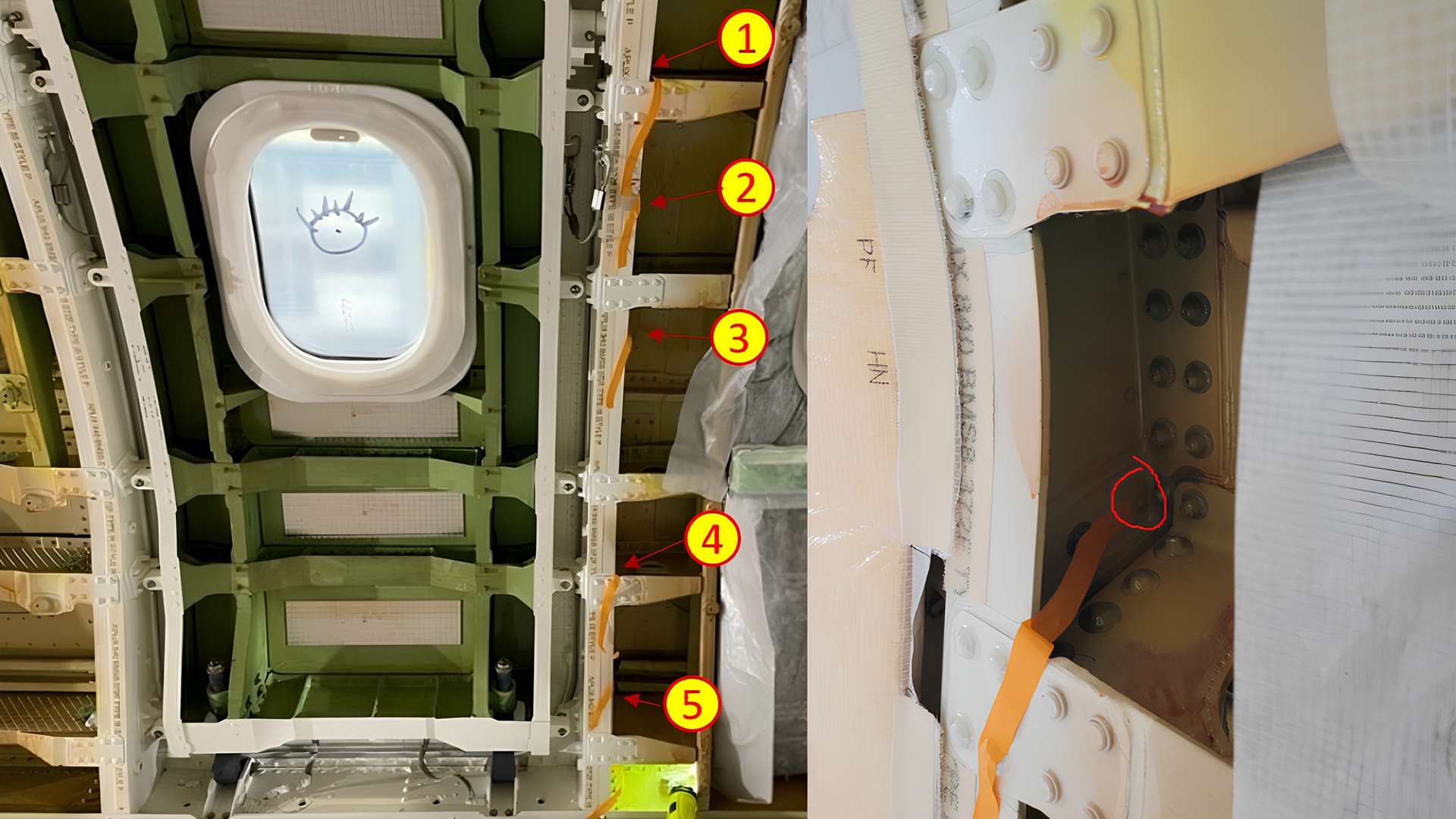
NTSB Investigates 737 MAX-9 Manufacturing “Escapement”
The NTSB also looked at Boeing’s manufacturing records, for this specific 737 MAX-9. And as it turns out (and as some leaks had previously indicated) Boeing did indeed record additional work involving this door plug and its frame.
The NTSB reports that Boeing engineers identified five rivets on the fuselage of this 737 MAX-9 that needed rework. These rivets were just forward of the door plug. And fixing them would involve opening the plug.
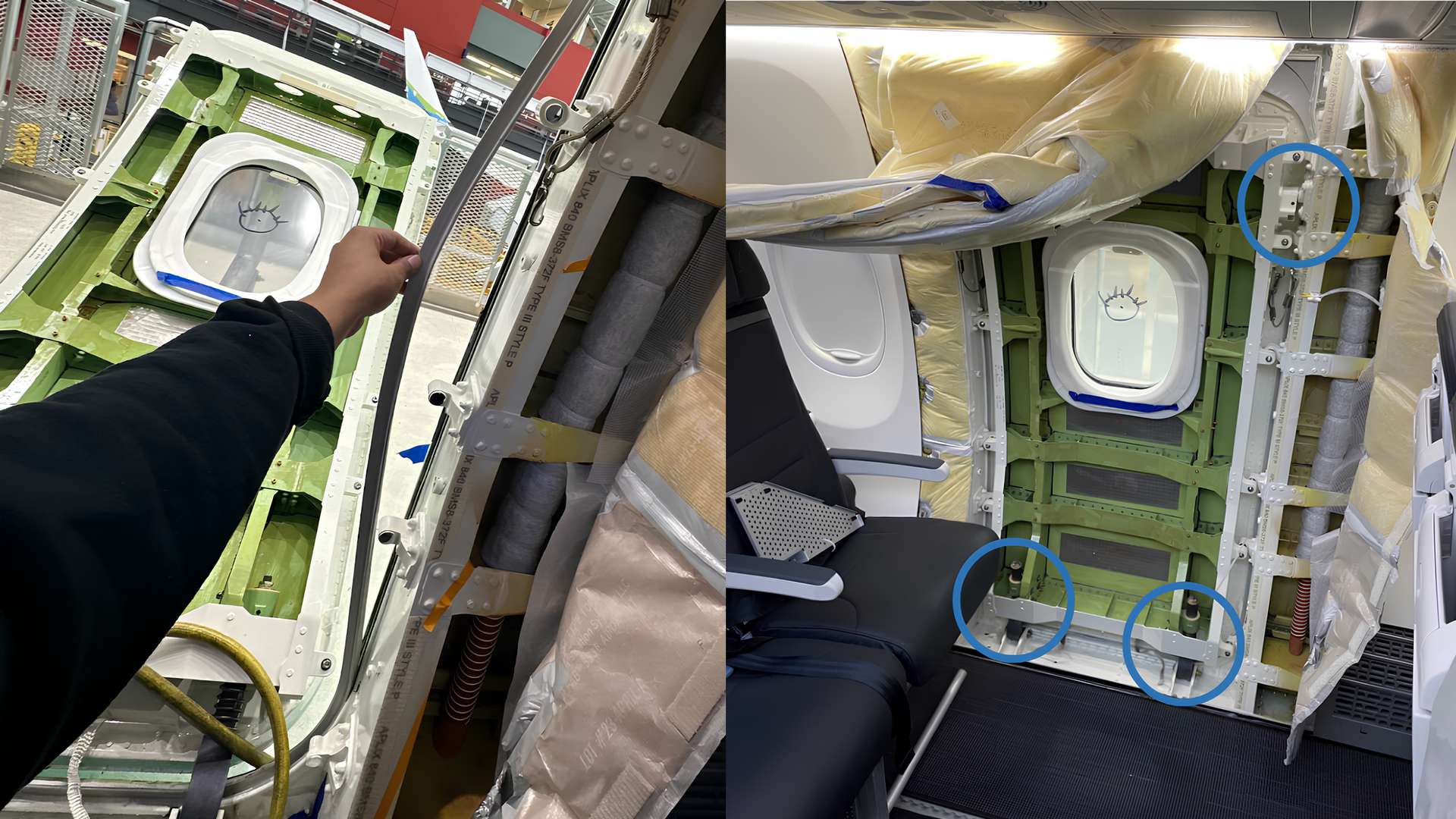
The same records show that the plug was indeed opened, for Spirit engineers (at Renton) to work on the rivets. A photo shows this, then another photo shows the door, now closed – but without the securing bolts. At this point, this rework was deemed to be over and workers were busy re-doing the cabin interior.
Other information, that the NTSB doesn’t discuss, suggests that this 737 MAX-9 manufacturing error (or “escapement”) could be due, in part, to a confusion involving the use of two record-keeping systems at Boeing.
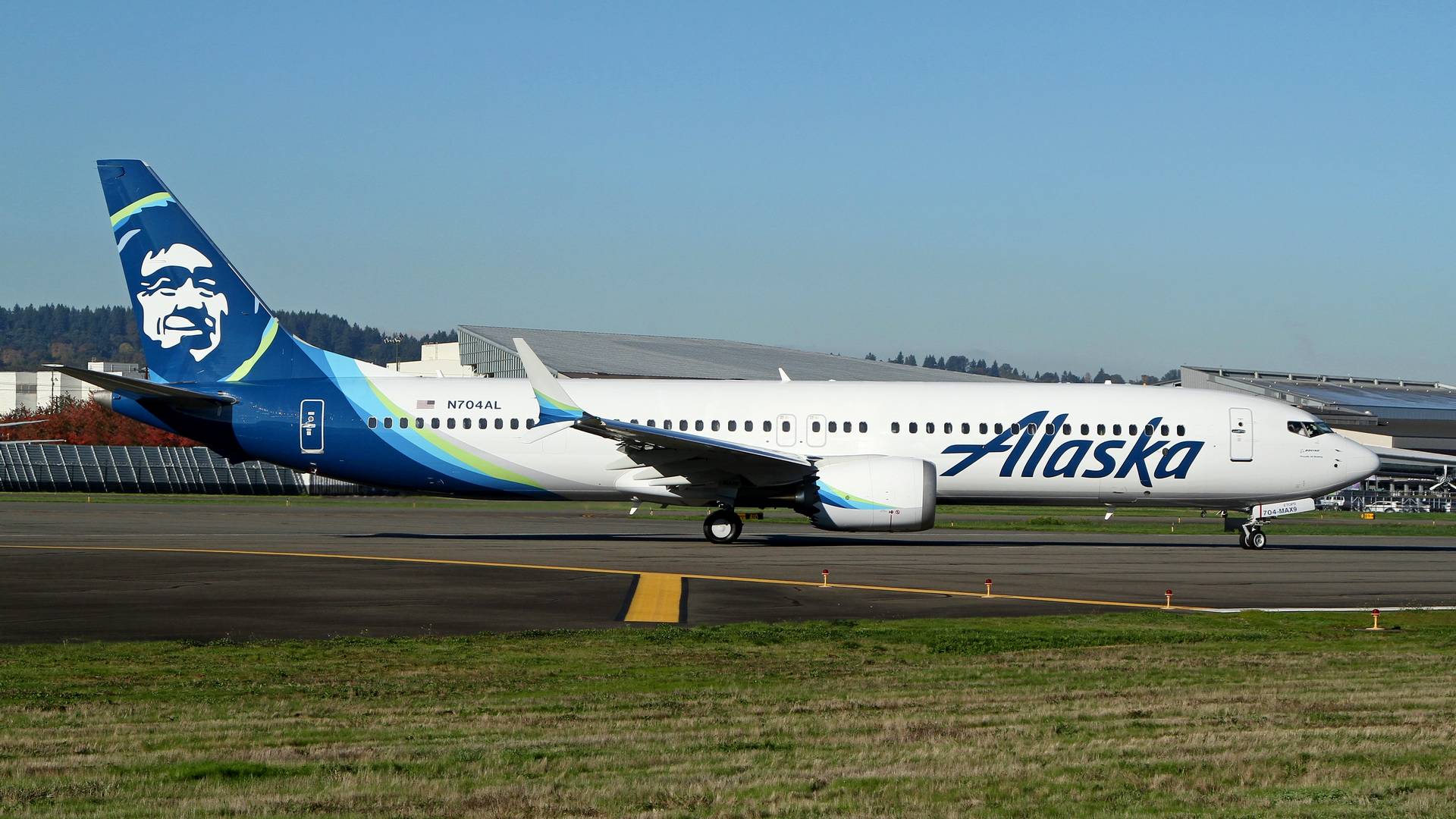
Any information regarding these systems will likely be part of the NTSB’s final report. That could take many more months. Finally, the NTSB doesn’t believe that subsequent work on this 737 MAX-9, to fit/modify a satellite antenna, involved opening the door plug.
There is obviously more to come from this story. We will likely hear more from hearings, looking closely at various aspects of quality processes at Boeing and its suppliers, in the coming weeks. Boeing still has some way to go, to regain the confidence of regulators and the public.
Source: NTSB (report opens locally)




5 comments
Wendy Christensen
The idea of finding random aircraft parts out in my yard is… terrifying. Don’t look up – a door might hit you in the face! I’m rather glad I have no need to fly anywhere anymore. I certainly have no wish to… and it’s only going to get worse, as merit, quality and craftsmanship take a further and further inferior importance to politics, race, gender, etc. Think, people, and maybe pray… a lot!
GLASOW
The door was opened because of some tolerances issues on the door frame (and a very minuscule one). Good Quality practices at Boeing exits, otherwise this would not have been detected.
But yeah, there is an issue somewhere…
Igor Griffiths
As you state the key to this incident lies in the “confusion involving the use of two record-keeping systems at Boeing”
I’m guessing these would be manufacturing and additional work records.
Edward
Wake-up! America is in severe decline as sexual issues, gender sensitivity, race and politics is more important than education, truth, etc..
Terrence Andrew
If this is indicative of the procedures and Quality Assurance practices of Boeng, is it really safe to fly on Boeng products?
Boeng seem to be having far tee many issues.